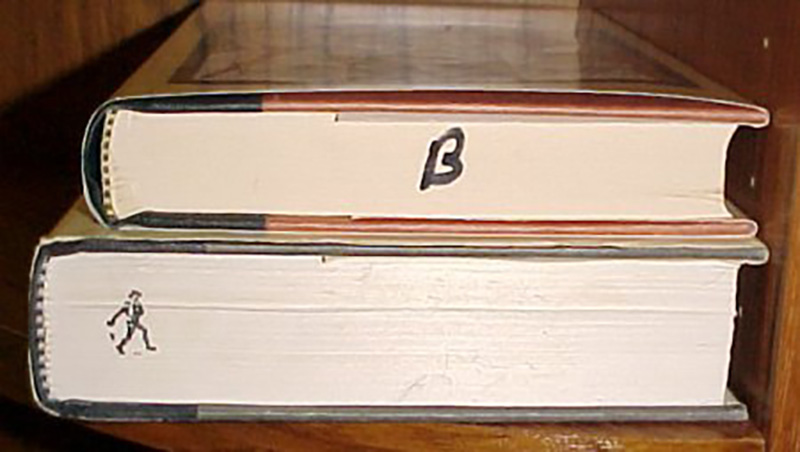What is a remainder mark? A remainder mark, within the realm of the book and publishing industry, is an identifying emblem that purposefully adorns a book to convey its status as a remaindered copy. This mark serves to differentiate these copies from their regularly sold counterparts.
When a book is deemed remaindered, it signifies that it has yet to be vetted and is no longer sought after by booksellers or distributors. To rid themselves of an overabundance of stock and generate space for new releases, publishers or bookstores may elect to vend these surplus books at notably reduced prices.
The remainder mark is customarily positioned on the lowermost edge of the book, in proximity to the spine, and manifests in an array of forms. It may appear as a diminutive dot or line or take the shape of a stamp, a spray of ink, or even a punched aperture. Irrespective of its manifestation, this mark unambiguously designates the book as a “remainder.”
These remaindered copies, frequently referred to as “remainders,” are dispensed through divergent avenues as opposed to customary retail editions. They are often encountered in discount or bargain bookstores and online retailers concentrating on discounted or discontinued books. Although pristine and untarnished, the remainder mark impacts their perceived value, rendering them less desirable to collectors or fervent readers seeking immaculate copies.
To conclude, a remainder mark is a distinct symbol that conveys a book’s status as a remaindered copy and is typically marketed at discounted prices through alternative distribution channels. It is pivotal in distinguishing these copies from regularly priced retail editions within the book and publishing industry.
Examples of a Remainder Mark



